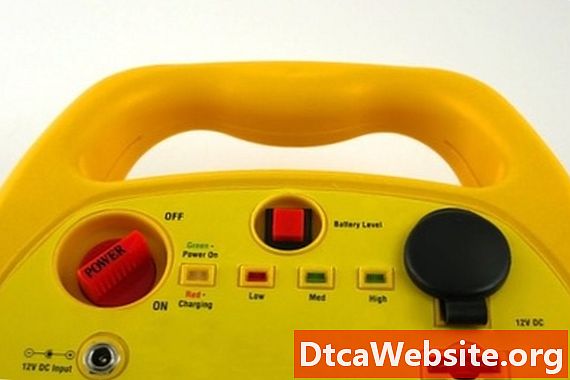
Contenu
- Testing for Damaged Piston Rings
- Step 1
- Step 2
- Step 3
- Testing for Leaky Valves
- Step 1
- Step 2
- Items you will need

Although gasoline is highly volatile, it is only when gasoline is mixed with oxygen and the mixture compressed that an explosion will result when the mixture is ignited. This is the fundamental concept behind every internal combustion engine. Compression takes place within the cylinders as the pistons move upward. To prevent air leaks, a number of rings surround each piston. At the top of the cylinder is the cylinder head, which is where the valves are. Like the piston rings, the valves must seal tightly to prevent air leaks. Checking for ring defects or leaky valves is of vital importance.
Testing for Damaged Piston Rings
Step 1
Pull the spark plug wires off all the spark plugs and remove all of the spark plugs with a socket wrench and a spark plug socket.
Step 2
Screw the threaded tip of a compression gauge into one of the spark plug openings within the cylinder head.
Step 3
Block the throttle wide open by having an assistant depress the accelerator pedal to the floor. This will allow the engine to have an unrestricted supply of air.
Ask the assistant to crank the engine while the accelerator pedal is depressed. Note the reading on the compression gauge, then repeat the test for the remaining cylinders. The amount of compression varies with altitude, but a normal compression reading is generally between 130 and 160 pounds-per-square-inch per cylinder. If each cylinder is within that range, the piston rings are in working order. If the gauge reading is low on a particular cylinder, remove the compression gauge and squirt a small amount of water into the cylinder with a spray bottle, then repeat the test. If the reading improves on that cylinder, the piston rings are either worn or cracked.
Testing for Leaky Valves
Step 1
Attach the rubber hose of a vacuum gauge to the intake manifold.
Step 2
Turn the engine on and have an assistant gradually depress the accelerator pedal to increase the speed of the engine.
Observe the needle of the vacuum gauge. If the needle reads steady, the valves are in good condition. If the needle fluctuates as the engine speed increases, the problem is likely a leaking valve.
Items you will need
- Compression gauge
- Assistant
- Water
- Spray bottle
- Vacuum gauge


